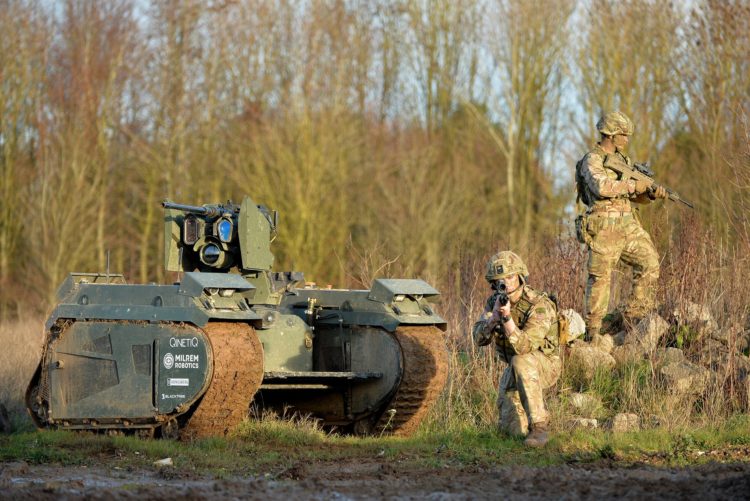The British military has successfully tested a series of robots in combat roles. With the skies already packed with flocks of Unmanned Aerial Vehicles (UAVs), and the oceans swimming with Autonomous Underwater Vehicles (AUV), it is time for the ground counterpart to assume a bigger role in today’s and tomorrow’s battlefields.
In the large-scale exercise Autonomous Warrior, the British Army tested under adverse conditions over 70 autonomous combat systems, such as drones with enhanced intelligence, surveillance, and reconnaissance (ISR) capabilities.
More than 50 of these projects made it through the assessment and selection process and will be moving through to the next phase of the programme, which will test their capabilities in resupplying frontline troops, enhancing command and control (C&C) on the combat zone, and providing battlefield surveillance. Particular importance was given to what the British Ministry of Defence (MoD) called the “Last Mile” of resupply. This refers to the potentially highly dangerous distance that might separate frontline troops from their supply assets. It also suggests a move toward more conventional conflicts, where established fronts would be more likely than the confused battleground that U.S. and U.K. troops have been facing for the past years in Iraq, Afghanistan, and Syria.
“Our troops now have the chance to test out a huge range of robotic kit in what will be the biggest exercise of its kind in our history,” said Gavin Williamson, the British Defence Secretary. “We’re always working with the brightest minds in Britain and across the world to see how they can support our military of the future, but now the frontrunners have the chance to prove what they can really do on a battlefield. This equipment could revolutionise our Armed Forces, keeping them safe and giving them the edge in an increasingly unstable world,” added Williamson.
Alongside the British Army, participants came from the Royal Marines, the Royal Air Force, and the U.S. Army. The exercise, which took place at Salisbury Plain, lasted for about a month.
But this isn’t the only technological advance that the British military has made lately. Recently, the British Army added to its arsenal four bomb-disposal robots. The Harris Corporation’s T7 UGV is outfitted with an adjustable manipulation arm that could be used to defuse bombs, a number of high-definition cameras that the UGV’s operator can use to guide the robot, and tracks that could traverse all kinds of difficult terrain.
These high-tech systems form the initial bunch of an order that is scheduled to furnish the British military with around 56 robots.
In an announcement, Williamson praised the operational effectiveness of the new unmanned systems. He said to reporters that, “these robots will go on to be an essential piece of kit, preventing harm to innocent civilians and the brave operators who make explosives safe.”
With the popularity of Improvised Explosive Devices (IEDs), such technological advances have been long in the process. The question, however, is how well these systems could perform in the climatically adverse conditions where IEDs are more prevalent (i.e., Africa and the Middle East). If the robots cannot handle fine dust, for example, or extreme temperatures, then they will be nothing more than an expensive display toy.
Already have an account? Sign In
Two ways to continue to read this article.
Subscribe
$1.99
every 4 weeks
- Unlimited access to all articles
- Support independent journalism
- Ad-free reading experience
Subscribe Now
Recurring Monthly. Cancel Anytime.









